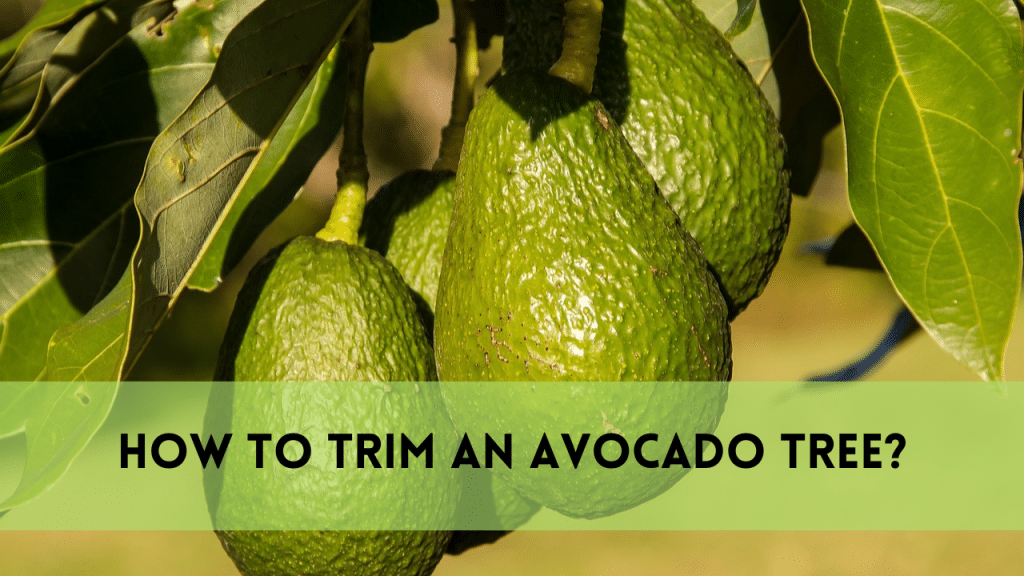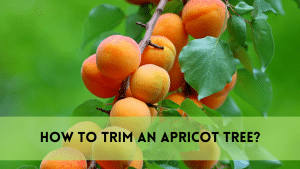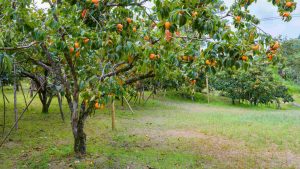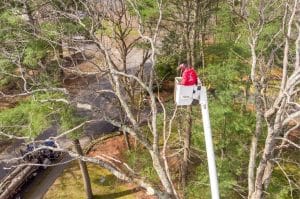Avocado trees (Persea americana) are valued not only for their tasty fruit but also for their attractive appearance. Proper trimming is vital for the health and productivity of these trees. This extensive tutorial will take you through how to trim an avocado tree, including the reasons for pruning, the optimum time to prune, the tools required, and step-by-step directions.
Why Trim an Avocado Tree?
Pruning is essential for various reasons.
Health: Removing dead, diseased, or damaged branches reduces the spread of disease and pests.
Shape and Size Control: Pruning helps keep the tree at a reasonable size, making it easier to harvest fruit and care for.
Increased sunshine: Thinning the canopy allows more sunshine to reach the interior branches and leaves, resulting in higher fruit output.
Air Circulation: Better air circulation lowers the incidence of fungal infections and other ailments.
Fruit Production: Proper pruning can promote new growth and boost fruit harvest.
When to Trim an Avocado Tree?
The optimal time to trim an avocado tree is in late winter or early spring, right before the growing season begins. This timing enables the tree to recover fast and create new growth in the subsequent season. Avoid extensive pruning in the fall and winter since it can make the tree more vulnerable to cold harm.
Required Tools to Trim an Avocado Tree
Having the proper tools is critical for good pruning. Here are some of the tools you will need to trim an avocado tree:
Pruning Shears: Used to trim tiny branches and twigs.
Loppers are for medium-sized branches.
Pruning Saw: For bigger branches.
Pole pruner: For high branches that are difficult to reach.
Disinfectant: Used to sterilize instruments and prevent the transmission of disease.
Protective Gear: Wear gloves, safety goggles, and long sleeves to protect yourself from thorns and debris.
How to Trim an Avocado Tree
Step 1: Assess the Tree
Before you trim an avocado tree, conduct a thorough examination of your tree. Walk around the tree, inspecting it from various angles to better grasp its structure. Identify any dead, diseased, or damaged branches that should be removed. Also, look for branches crossing, growing inward, or rubbing against one another; these will require treatment.
Step 2: Sterilize your tools
To prevent disease transmission, disinfect your pruning instruments. Use a disinfection solution of one part bleach and nine parts water or rubbing alcohol. Dip your tools in the solution and allow them to air dry. This procedure is especially crucial if you’ve been working with other plants or trees that may be diseased.
Step 3: Remove any dead, diseased, or damaged wood
Begin by cutting away any visibly dead, diseased, or damaged branches. For smaller branches, use sharp pruning shears, loppers for medium-sized branches, and a pruning saw for bigger branches. Make clean cuts near the branch collar (the swelling area where the branch meets the trunk), but do not cut into the collar itself since this might injure the tree and impair its capacity to recuperate.
Step 4: Thin out the canopy
Identify any branches that are overloaded or crossing. These branches can block sunlight penetration and air circulation, resulting in low fruit yield and an increased risk of illness. Thin the canopy by eliminating some of these branches. Cut back to a healthy lateral branch or bud, using clean cuts to aid healing.
Step 5: Shape the Tree
Pruning to preserve an open, vase-like shape promotes proper light exposure and air circulation throughout the tree. Remove any inward-growing branches, as these can prevent sunshine and air from reaching the tree’s interior. Also, cut away any branches that are too low or too high to achieve a balanced, aesthetically pleasing shape.
Step 6: Prune for Size Control
If your avocado tree grows too tall or wide, you can minimize its size by pruning the central leader (the center vertical branch) to a lower lateral branch. This keeps the tree at a manageable height and width, making it easier to harvest and care for. When cutting back the primary leader, make the cut at a 45-degree angle to encourage healthy healing.
Step 7: Encourage fruit production
Pruning some older, less productive branches will promote new growth and enhance fruit yield. Maintain a balance between old and new wood. By pruning some of the older branches, you stimulate the tree to generate new shoots that will give fruit in future seasons. Avoid removing too much wood at once since this might stress the tree.
Step 8: Clean up
After completing pruning, collect all the cut branches and leaves. Dispose of them properly, mainly if they exhibit signs of disease. Leaving unhealthy plant material at the tree’s base can result in more illnesses. Clean your instruments well before storing them, using the same disinfection solution you used to guarantee they are ready for future use.
Step 9: Watering and After-Pruning Care
Following pruning, your avocado tree will require appropriate water to recover. Make sure the soil around the tree is wet but not soggy. Deep watering is recommended so that the water can reach the roots. Monitor the tree for symptoms of stress or disease, such as withering leaves or discoloration, and deal with any problems as soon as possible.
Step 10: Fertilization
To promote new growth following trimming, use a balanced fertilizer as the manufacturer directs. Fertilization gives the nutrients that the tree requires to grow new leaves and branches. Be careful not to overfertilize, which can cause the tree to grow beyond its capacity.
Step 11: Mulching
Spread a layer of mulch around the tree’s base to help retain moisture, control weeds, and regulate soil temperature. Keep the mulch a few inches from the trunk to avoid rot and pests. Mulching contributes to a stable environment for the roots and encourages healthy growth.
Step 12: Monitoring and ongoing care
Regularly monitor your avocado tree. Check for symptoms of new growth, sickness, or pests. Inspect the tree regularly and make any necessary minor pruning modifications. Ongoing care, such as correct watering, fertilization, and mulching, will help your avocado tree remain healthy and productive.
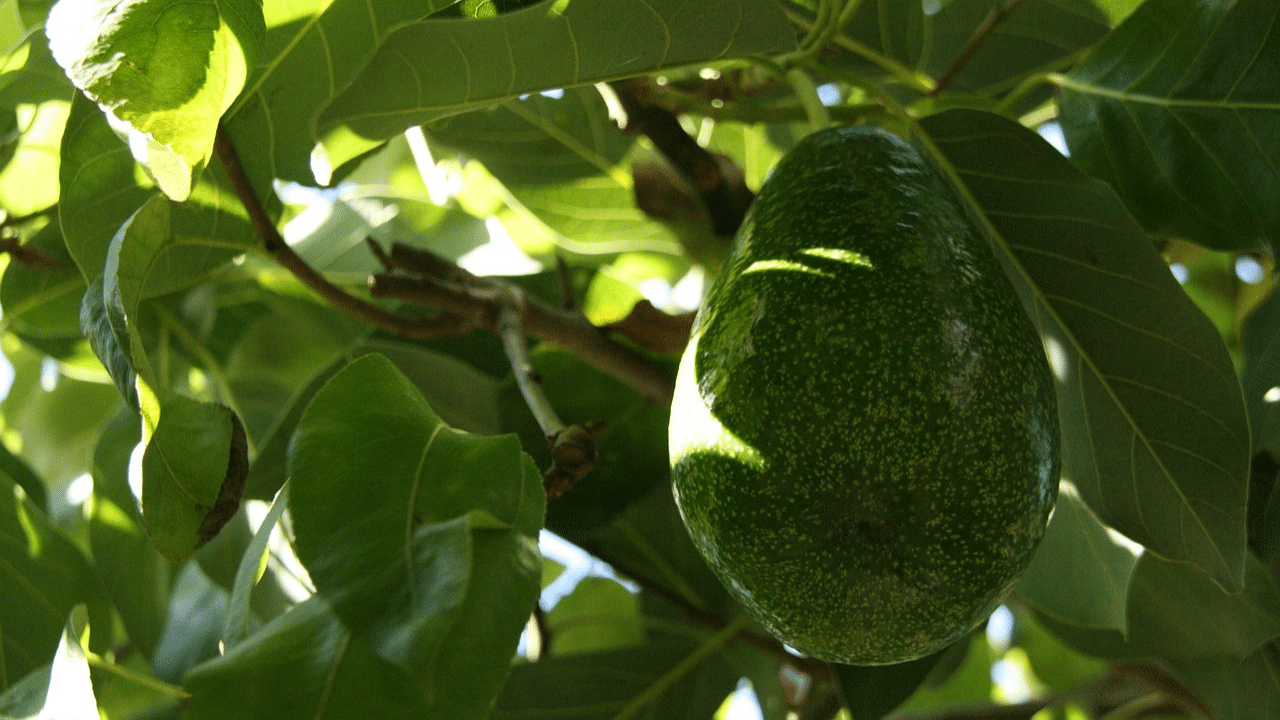
Post-Pruning Care of An Avocado Tree
After pruning, your avocado tree will require further care to recover and thrive:
Watering: Ensure the tree gets enough water, especially in dry weather.
Fertilizing: Use a balanced fertilizer to promote new growth. Application rates should be calculated according to the manufacturer’s instructions.
Mulching: Apply a layer of mulch around the tree’s base to retain moisture and inhibit weeds. To prevent rot, keep the mulch several inches away from the trunk.
Monitor the tree for symptoms of stress or disease. Address any concerns as soon as possible to ensure a full recovery.
FAQS
How frequently should I trim an avocado tree?
Trim an avocado tree annually, ideally between late winter and early spring. Regular gentle pruning throughout the year can help keep it in shape and healthy.
Can I trim an avocado tree in the summertime?
Heavy pruning is best avoided during the summer because it can harm the tree. Light pruning to remove small, undesirable branches is OK, but significant cuts should be avoided until late winter or early spring.
What happens if I too much trim an avocado tree?
If you mistakenly over-trim an avocado tree, it may take longer to recover and bear fruit. Ensure it receives adequate care, including water and nutrition, to help it recuperate. Avoid heavy pruning in the future.
Are there any branches I shouldn’t prune?
Avoid eliminating too many lower branches since they support the tree and give stability. Also, do not cut the primary leader (central vertical branch) unless absolutely necessary for height management.
Can you trim an avocado tree to keep it small?
Yes, regular trimming can assist in keeping your avocado tree at a smaller size. Control the height and thin the canopy to make it compact and manageable.
Conclusion
To properly trim an avocado tree is critical for its health, productivity, and attractiveness. Follow the abovementioned methods to guarantee your avocado tree thrives: inspect the tree, sterilize tools, remove dead or diseased wood, thin the canopy, shape the tree, and encourage fruit production.
Watering, feeding, and mulching the tree regularly after pruning will help it develop and produce more fruit. Magnolia Tree Removal will provide experienced assistance with your avocado tree or any other tree care needs.

